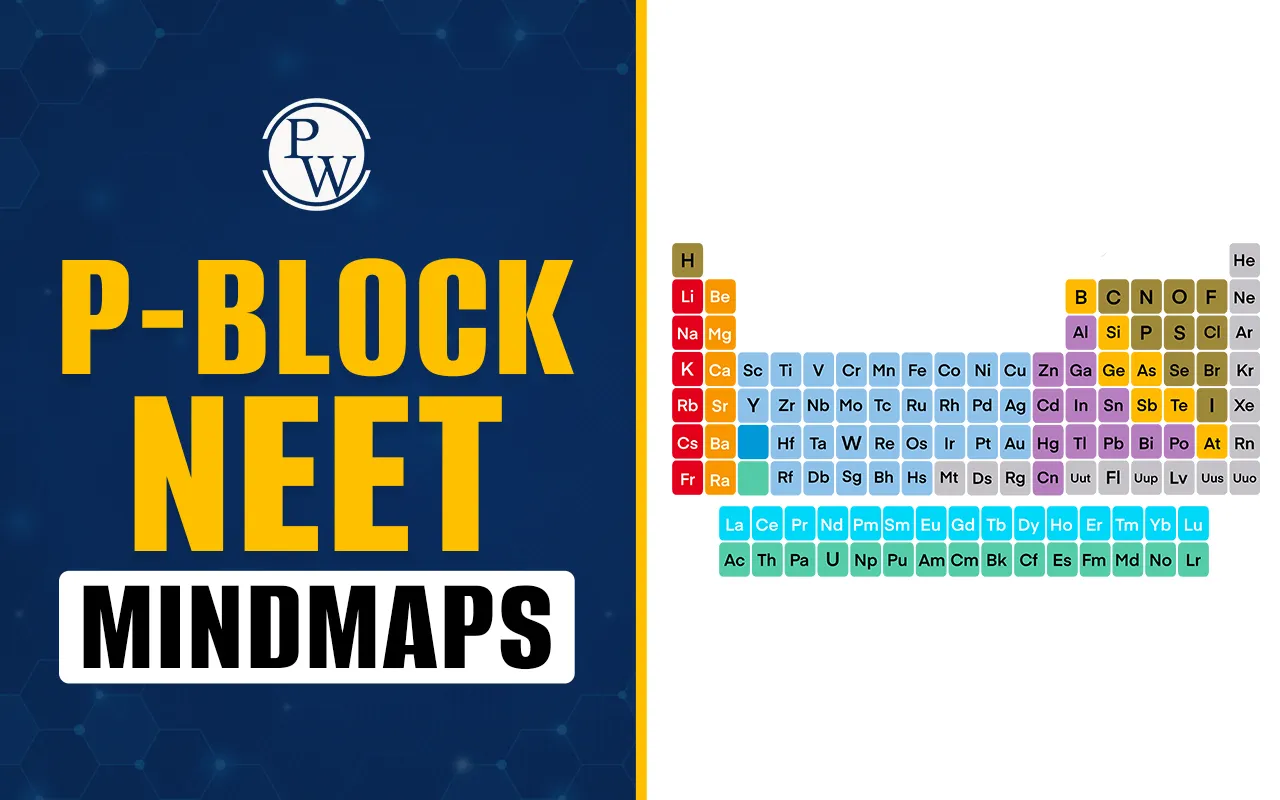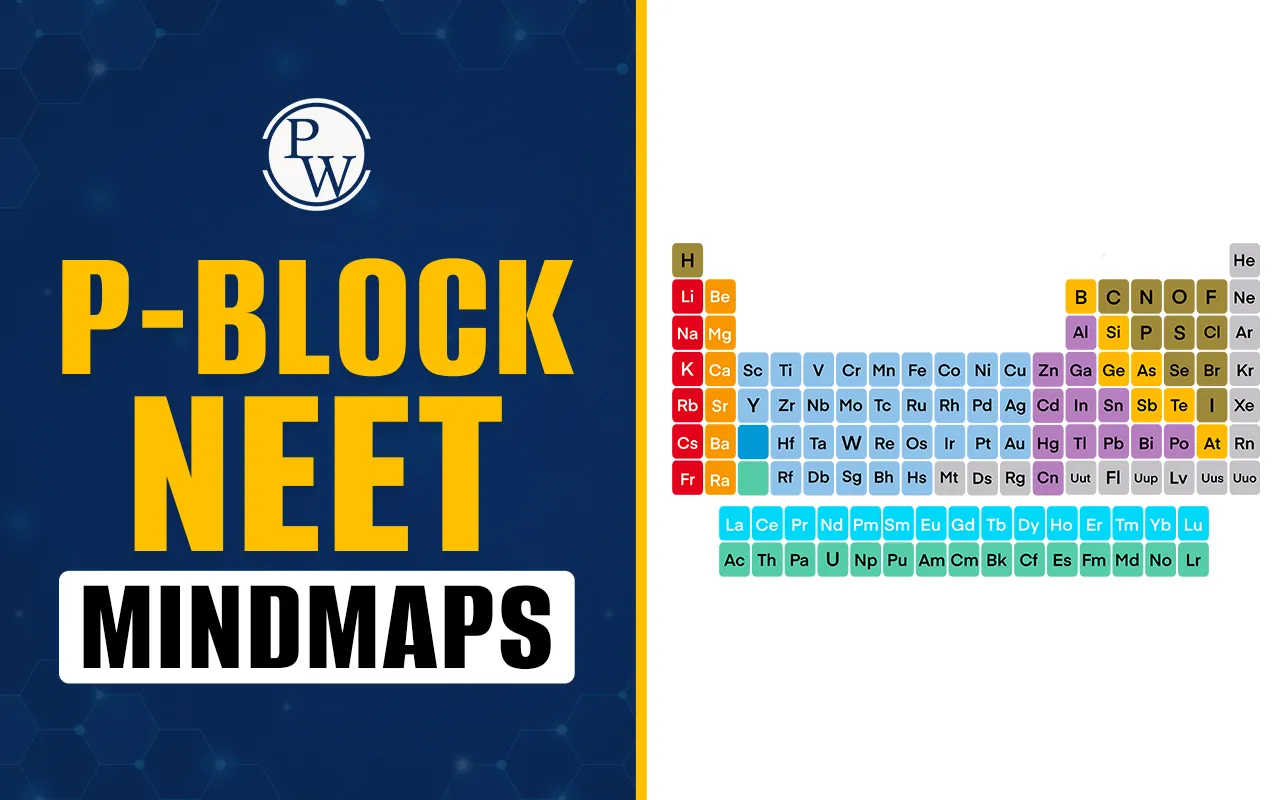

P-Block NEET Mindmaps: P-Block Elements is one of the most important topics in NEET Chemistry. It carries good weightage every year, with questions asked on group trends, physical and chemical properties, important compounds, and applications. On the basis of a variety of questions, it might become difficult for students to memorize the large number of reactions, periodic trends, and structural details of compounds, making revision difficult.
P-Block NEET mindmaps are useful for comprehensive revision. They provide a one-page summary of the entire chapter, including formulas, short notes, and concepts for each group (Group 13 and Group 14). This will help you revise essential theories such as boron family, carbon family, boric acid, diborane, alum, oxides, silicones, silicates, zeolites, allotropes of carbon, and many more, in just minutes.
P-Block NEET Mindmaps
Instead of flipping through hundreds of NCERT pages, P-Block NEET mindmap notes provide a structured one-page sheet that connects all the concepts visually. These notes are helpful for NEET aspirants during last-minute revision. The P-Block NEET Mindmaps cover:
-
Boron Family (Group 13): Physical and chemical properties, reducing power trends, halides, oxides, hydroxides, and compounds like AlCl₃, Alum, Borax.
-
Carbon Family (Group 14): Oxidation states, stability trends, CO & CO₂ chemistry, allotropes (diamond, graphite, fullerenes), and industrial uses.
-
Compounds of Boron and Silicon: Boric acid, diborane structure, silicones, silicates, zeolites, and their applications.
-
Properties and Trends: Atomic radii, ionisation enthalpy, density, melting & boiling points, electronegativity, inert pair effect, and reactivity patterns.
These P-Block NEET mindmap notes allow aspirants to connect concepts and visualize periodic trends without flipping through multiple books.
P-Block NEET Mindmap PDF
P-Block NEET mindmap PDF is a useful one-page revision sheet that summarises the entire P-Block chapter into diagrams, flowcharts, and formulas. You can use this PDF for last-minute revision before the NEET exam.
Along with PW NEET notes and important questions, the P-Block NEET mindmap PDF will help you strengthen your understanding, solve practice questions efficiently, and revise all concepts quickly.
Tricks to Learn P-Block NEET Mindmaps
The P-Block chapter is vast because of multiple groups, properties, and exceptions. Using P-Block NEET mindmaps can simplify this by giving a structured approach to revision.
-
Link Trends with Properties: Remember that atomic radii, ionisation enthalpy, and electronegativity trends explain most physical and chemical behaviours.
-
Use Mnemonics: For remembering compounds (like halides, oxides, hydroxides), make short codes.
-
Practice with Reactions: Revise P-Block NEET mindmap concepts and then solve NCERT examples and important questions.
-
Layered Revision: Start with group properties → then specific compounds → then important reactions.
-
Quick Recall Notes: Keep the P-Block NEET mindmap short notes with you for exam-day revision.
P-Block NEET Mindmap Formulas
Here are some key P-Block NEET mindmap formulas and equations included in the notes:
|
P-Block NEET Mindmap Formulas |
|
|
P-Block NEET mindmap concepts |
Formula / Trend |
|
Stability of Oxidation States |
+3 > +1 for Boron family (except Tl due to inert pair effect) |
|
Diborane Structure |
Contains 3c–2e (banana) bonds |
|
Boric Acid |
H₃BO₃ + Heat → HBO₂ → H₂B₄O₇ → B₂O₃ |
|
CO Formation (Coal Gasification) |
C + H₂O → CO + H₂ |
|
CO₂ in Water |
CO₂ + H₂O ⇌ H₂CO₃ |
